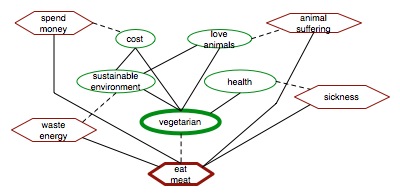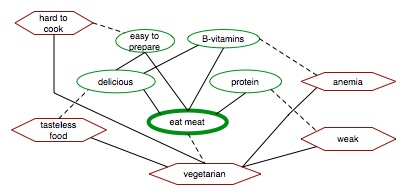
This assignment is due Thursday, Sept. 29, 11:30 a.m., in class. It is worth 7 marks out of 100 for the course.
Late assignments will be accepted until Oct. 4 at 11:30, in class, but will receive a maximum of 5 marks.
After Oct. 4 at 11:30, assignments will not be accepted, except for documented reasons of illlness or family emergency.
Students will analyze an important issue in environmental ethics using value maps, a kind of cognitive-affective map.
Choose ONE of the three topics below.
Hand in a single page, two-sided, consisting of:
1. Is medical experimentation with non-human animals morally wrong? Yes or no?
2. Is the extinction of non-human animals morally wrong? Yes or no? NOTE: If you do this topic, the assignment MUST be handed in by Sept. 29.
3. Is the use of genetically modified organisms morally wrong? Yes or no?
Instructions for drawing cognitive-affective maps is available here, and will be provided in class Sept. 20.
Each map (maximum 1/2 page) must include:
Tools for drawing value maps.


Each value map will be worth 2.5 marks.
The discussion will be worth 2 marks.
Computational Epistemology Laboratory.
This page updated Sept. 27, 2011